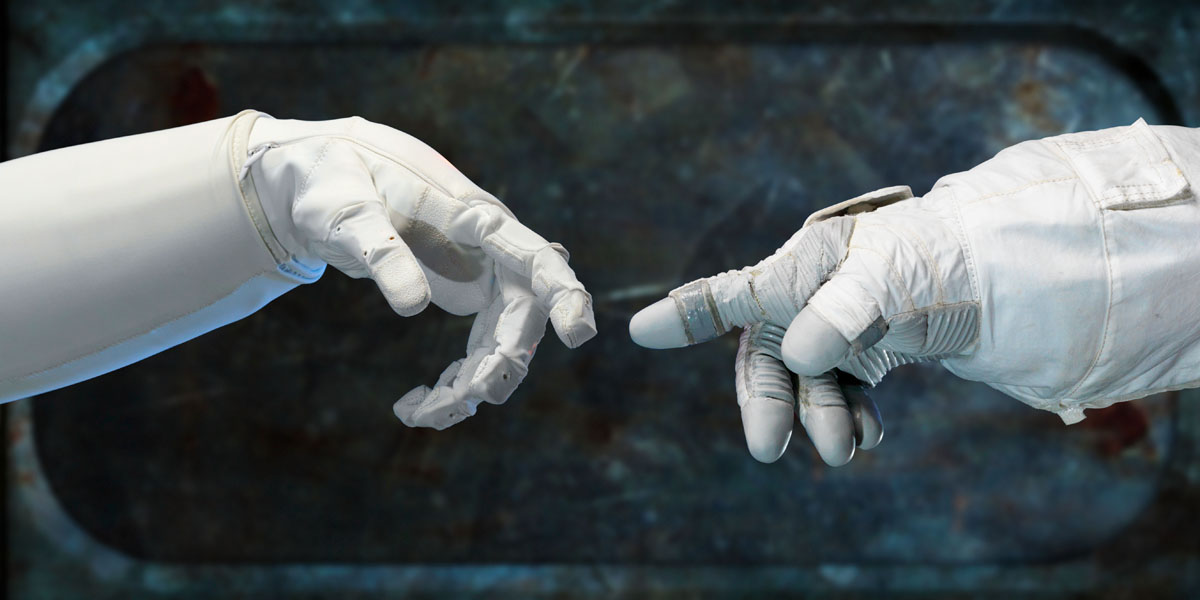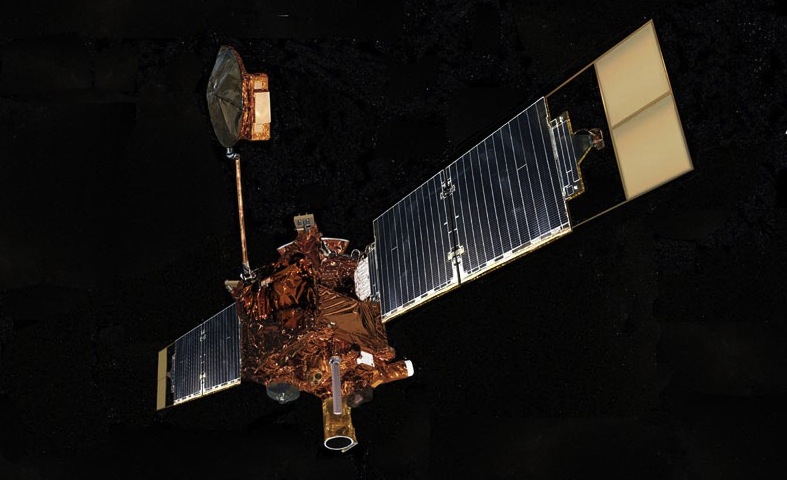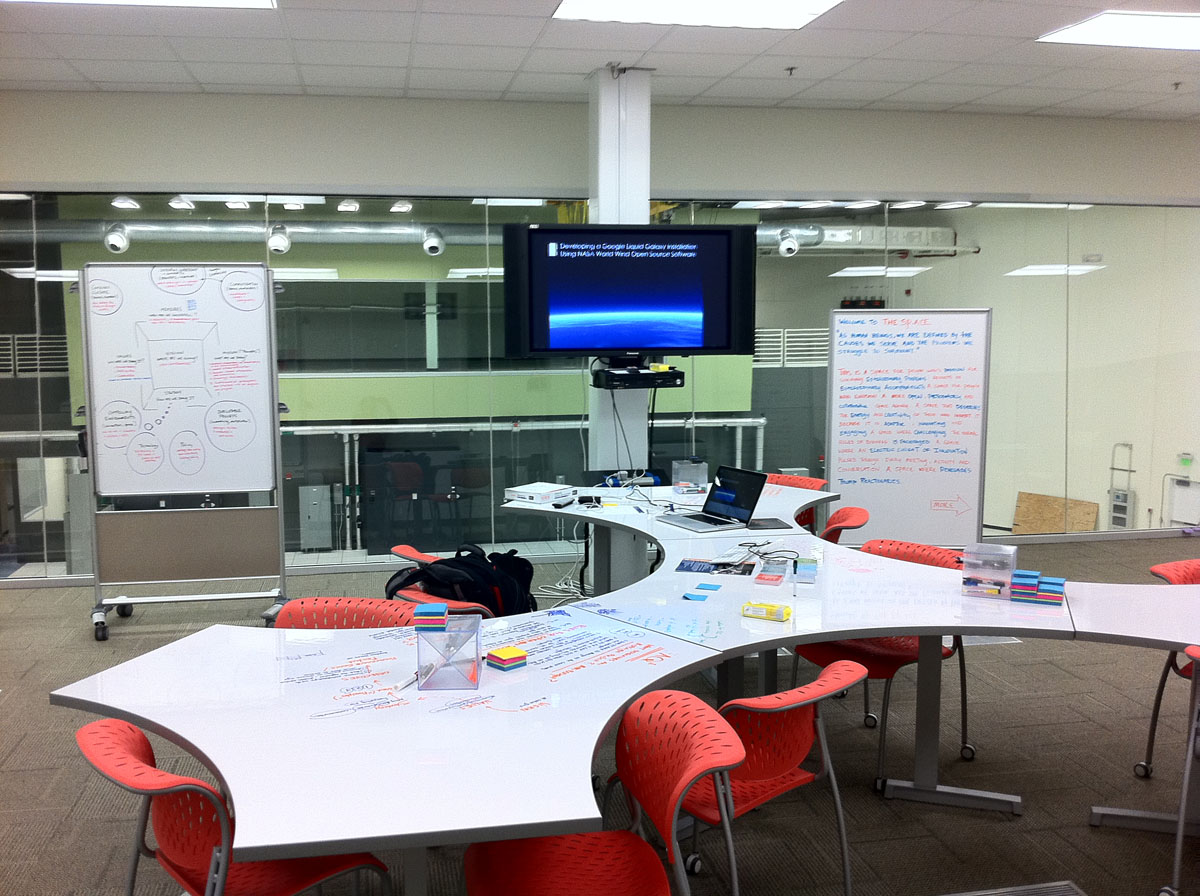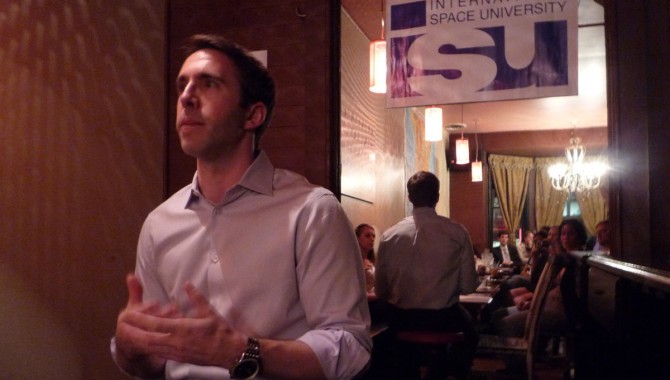
Dr. Kris Lehnhardt speaks at the International Space University Space Café on March 13, 2012. The event took place at Science Club in Washington, DC. Photo Credit: Image courtesy of Dr. Kris Lehnhardt.
March 28, 2012 Vol. 5, Issue 3
A biomedical knowledge gap stands in the way of successfully sending humans to Mars.
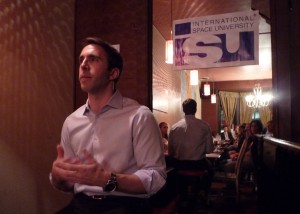
Dr. Kris Lehnhardt speaks at the International Space University Space Café on March 13, 2012. The event took place at Science Club in Washington, DC.
Photo Credit: Image courtesy of Dr. Kris Lehnhardt.
“If we could build the spaceship tomorrow, could we go to Mars?” Dr. Kris Lehnhardt, asked his audience at the March International Space University (ISU) Space Café in Washington, DC. Lehnhardt, an expert in emergency and aerospace medicine at George Washington University, ticked off the challenges of sending humans on a long-duration, long-distance space flight: bone loss, kidney stones, muscle loss, orthostatic intolerance (e.g., similar to standing up too fast and blacking out), neurovestibular instability (e.g., motion sickness and dizziness), psychological factors (e.g., depression, anxiety), and, most challenging of all, radiation.
Lehnhardt readily explained each challenge, engaging with the crowd in a thoughtful discussion about each, but the topic of radiation kept coming up. “You could find solutions and workarounds for just about anything on the list of problems using current technology. Not so for the radiation problem,” he said.
The current mission profile to Mars involves a 10-month trip to the surface of the planet. By the time the crew reenters an environment with gravity and has the opportunity to step out onto the surface, any number of things could go wrong: blackouts, dizziness, weakness. If you then were to ask, ‘How do we stop that from happening,’ I can give you a list of 100 different things you can do,” said Lehnhardt, noting that supplements, exercise, patience, and medication are all options. “If you ask me, ‘What do we do about galactic cosmic radiation?’ I don’t really know what we can do about that.”
Galactic cosmic radiation (GCR) differs from solar radiation, the kind that comes from stars like our sun. GCR comes from supernovae and contains higher-energy particles that will take an untested toll on organic material. “Most of our radiation knowledge on Earth comes from a few sources: acute radiation exposure (like the atomic bomb or Chernobyl) and long-duration, low-level exposure (people who work around CAT scanners),” Lehnhardt explained. “None of those is an equivocal model to galactic cosmic radiation.”
Testing the effects of GCR on biological tissue would require sending (and preferably returning) living biological samples beyond low-Earth orbit, the Van Allen Belt (~4,000 miles from Earth’s surface), and the moon—beyond the protection of Earth’s magnetosphere—to reach a place where GCR’s impact could be tested. So far, no missions have studied this, and the number of people studying it is dwindling. “Many of the flight surgeons, many of the people who have been doing this within recent memory at NASA are getting older. They’re going to retire eventually and there are very few new people coming through the pipeline,” said Lehnhardt. “The paucity of work in this area over the last ten years has resulted in a dwindling biomedical community.”
Lehnhardt engaged the audience in a thoughtful discussion for nearly two hours. “I don’t want to discourage anybody and make them think human exploration is impossible because we have all of these questions we need to answer,” he said.
“If all you want to do is low-Earth orbit, we can keep people pretty safe in LEO,” said Lehnhardt. “But if you truly want to live and work in deep space, we need to have an understanding of how you can do that in an efficient and safe manner.”






